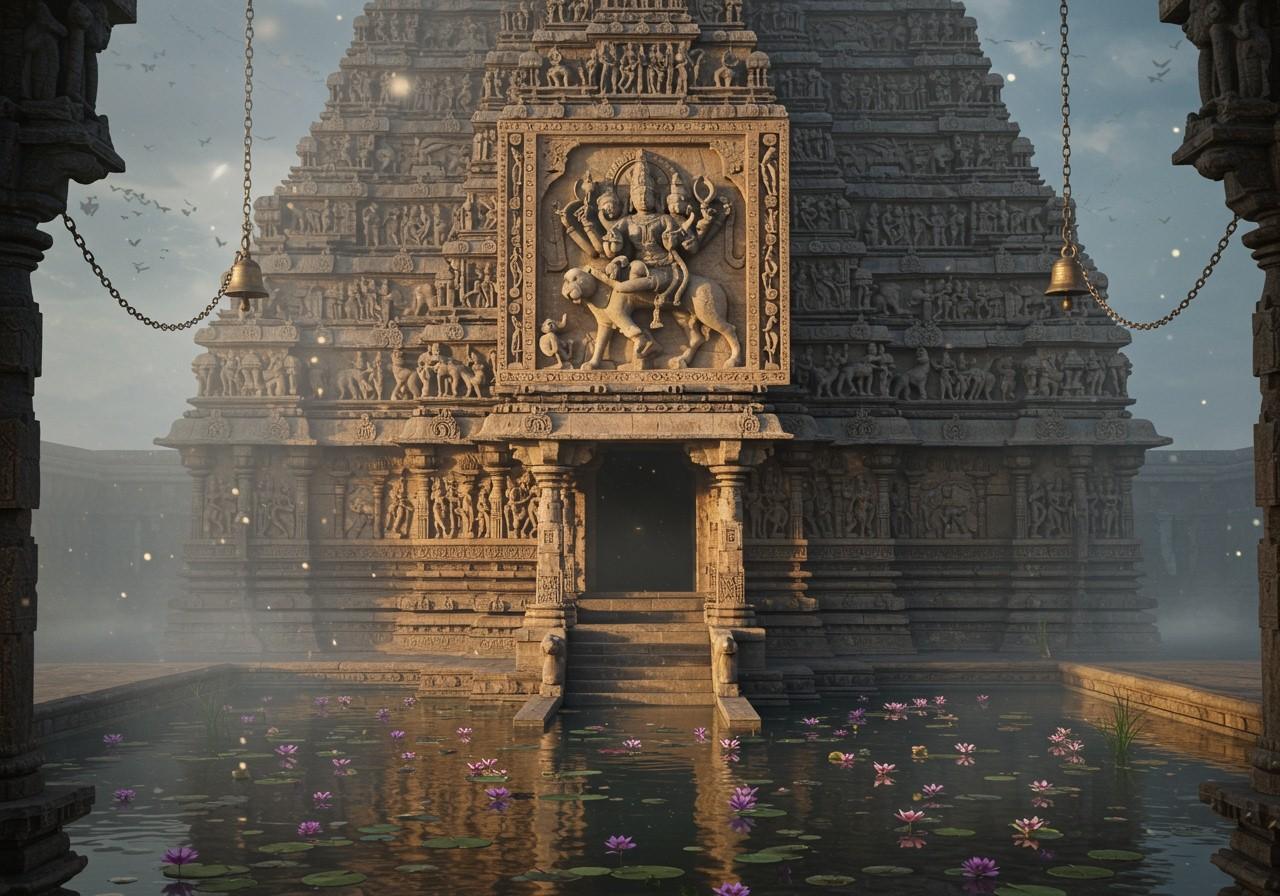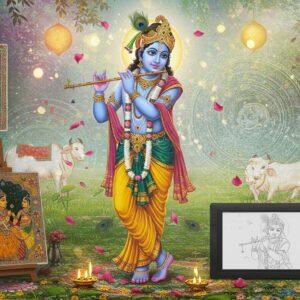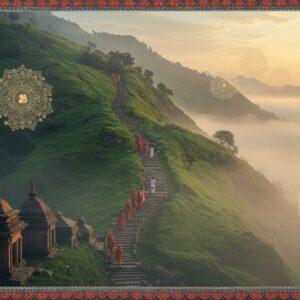
Hoysala art and culture offer a captivating glimpse into the rich heritage of Karnataka, India. Flourishing between the 11th and 14th centuries, the Hoysalas left an indelible mark on the region’s architectural and cultural landscape. Their unique contributions to sculpture, literature, and traditions continue to be celebrated today. This exploration is perfect for those who appreciate India’s cultural heritage and seek authentic experiences.
The Splendor of Hoysala Architecture and Sculpture
Hoysala architecture is renowned for its distinctive features, including star-shaped platforms and incredibly intricate carvings. The use of soapstone, a relatively soft stone, allowed artisans to create highly detailed sculptures depicting deities, dancers, and scenes from daily life. The Chennakeshava Temple in Belur (built in 1117) and the Hoysaleswara Temple in Halebidu (built in 1121) stand as prime examples of this architectural style, showcasing a harmonious blend of spiritual and artistic expression. These temples, along with others like the Somnathpura temple, exemplify the Hoysala style’s innovative departure from earlier Chalukyan influences.
The Hoysala sculptors played a crucial role in elevating this art form, employing specialized techniques and tools. Their intricate carvings narrate stories and express religious themes, adding depth and meaning to the architectural marvels. Each temple and sculpture stands as a testament to the exceptional skill and artistic vision of the Hoysala artisans.
The Unique Character of Hoysala Architecture
Hoysala architecture, flourishing between the 11th and 14th centuries, particularly in Karnataka’s Hassan district, stands out for its creativity and grandeur. This style represents a significant shift from the earlier Chalukyan influence, embracing innovative artistic approaches that reached their peak in the 13th century.
The distinctive star-shaped platforms are a hallmark of Hoysala temples. This design element not only enhances the visual appeal but also contributes to the structural integrity of the buildings. The Chennakeshava Temple at Belur, consecrated in 1117, exemplifies this feature with its intricate carvings and detailed sculptures.
Soapstone was the material of choice for Hoysala sculptors. Its softness facilitated the creation of intricate details, allowing artists to depict deities, dancers, and scenes from everyday life with remarkable precision. The Hoysaleswara Temple at Halebidu, whose construction began in 1121, beautifully showcases these elements, offering a window into the past.
The sculptors of the Hoysala era were true masters of their craft. Their specialized techniques and tools allowed them to bring stories to life in stone. Each carving conveys a narrative, reflecting religious themes and the deep devotion of the artists.
The fusion of indigenous South Indian traditions with innovative artistic approaches defines the unique character of Hoysala architecture. More than just constructing temples, the Hoysalas created a lasting legacy. This architectural style serves as a testament to the skill and vision of its creators, a celebration of both spiritual and artistic expression.
Exploring Hoysala architecture offers a profound journey into India’s rich heritage for those seeking authentic cultural experiences. The beauty and intricacy of these structures continue to inspire admiration and respect for the artists who brought them to life.
Poojn.in: Connecting You with Hoysala Heritage
Poojn.in, India’s leading online store for cultural goods and services, provides essential items for embracing and celebrating Hoysala traditions in your contemporary life. Our thoughtfully curated collection includes:
Traditional Puja Items:
- Pure brass and copper lamps (deepa) reminiscent of those used in Hoysala temples, handcrafted with intricate designs.
- Authentic kumkum and chandana holders featuring Hoysala-style geometric patterns, adding a touch of tradition to your puja.
- Traditional bell metal plates for naivedya, adorned with Hoysala motifs, perfect for offerings during puja.
Sacred Texts and Literature:
- Sanskrit texts with Kannada translations of Hoysala-era literature, providing access to ancient wisdom.
- Books on Hoysala temple architecture and symbolism, deepening your understanding of this rich heritage.
- Guides to Hoysala-style ritual practices, enabling you to connect with the spiritual traditions.
Ritual Essentials:
- Natural kumkum and chandana sourced from trusted suppliers, ensuring purity and authenticity for your rituals.
- Pure cotton wicks for traditional oil lamps, crafted for optimal burning and a serene ambiance.
- Copper and brass vessels for temple-style worship, adding an element of traditional elegance to your puja space.
Our products are meticulously verified for authenticity and quality, reflecting the high standards of Hoysala craftsmanship. Each item comes with detailed usage instructions in multiple regional languages. We offer secure packaging and timely delivery across India, ensuring that traditional items are accessible to all who appreciate Hoysala culture.
Visit poojn.in to discover our complete collection of Hoysala-inspired ritual items and resources.
Embracing the Enduring Legacy of Hoysala Art and Culture
In the heart of Karnataka resides the timeless legacy of Hoysala art and culture. This remarkable period offers a captivating glimpse into a time of unparalleled creativity and devotion, where every sculpture and temple narrates a story of faith and artistry. The star-shaped platforms and intricate soapstone carvings are not merely architectural marvels but enduring symbols of a rich cultural heritage.
Exploring the temples of Belur and Halebidu is like stepping into a world where the past seamlessly merges with the present. These structures are more than historical sites; they are living testaments to the Hoysala dynasty’s unwavering commitment to spiritual and artistic excellence. The Hoysalas’ unique fusion of tradition and innovation continues to inspire awe and admiration.
For those who value tradition and seek a deeper connection with India’s cultural roots, the journey through Hoysala architecture is both enlightening and inspiring. It serves as a powerful reminder of the timeless beauty and wisdom embedded in India’s history, encouraging us to honor the past while embracing the valuable lessons it offers for the future.
FAQs: Delving into Hoysala Art and Culture
What defines the significance of Hoysala Art and Culture? Hoysala art and culture hold a significant position in Indian history, renowned for their intricate sculptures, magnificent temples, rich literature, and unique traditions, reflecting the creativity and devotion of the era.
How is ‘Hoysala’ pronounced? ‘Hoysala’ is pronounced as ‘Hoy-sa-la,’ with the emphasis on the first syllable.
Which are some renowned Hoysala sculptures? Celebrated Hoysala sculptures grace temples such as Belur, Halebidu, and Somnathpura, often depicting deities and scenes from Hindu mythology with remarkable detail.
What distinguishes Hoysala temples? Hoysala temples are unique for their star-shaped design, ornate carvings, and the skilled craftsmanship of Hoysala artisans, showcasing their dedication to beauty and symmetry.
What is the Hoysala contribution to Kannada literature? The Hoysalas significantly enriched Kannada literature through their patronage of poets and writers, leaving behind a legacy of celebrated literary works, including poetry and prose.
What traditions are linked to Hoysala culture? Hoysala culture encompasses various traditions, including temple rituals, festivals, and artistic expressions, emphasizing devotion, community, and the celebration of life.
Are there contemporary influences of Hoysala art and culture? Yes, modern architecture, art, and even dance performances often draw inspiration from Hoysala art and culture, demonstrating its enduring influence.


